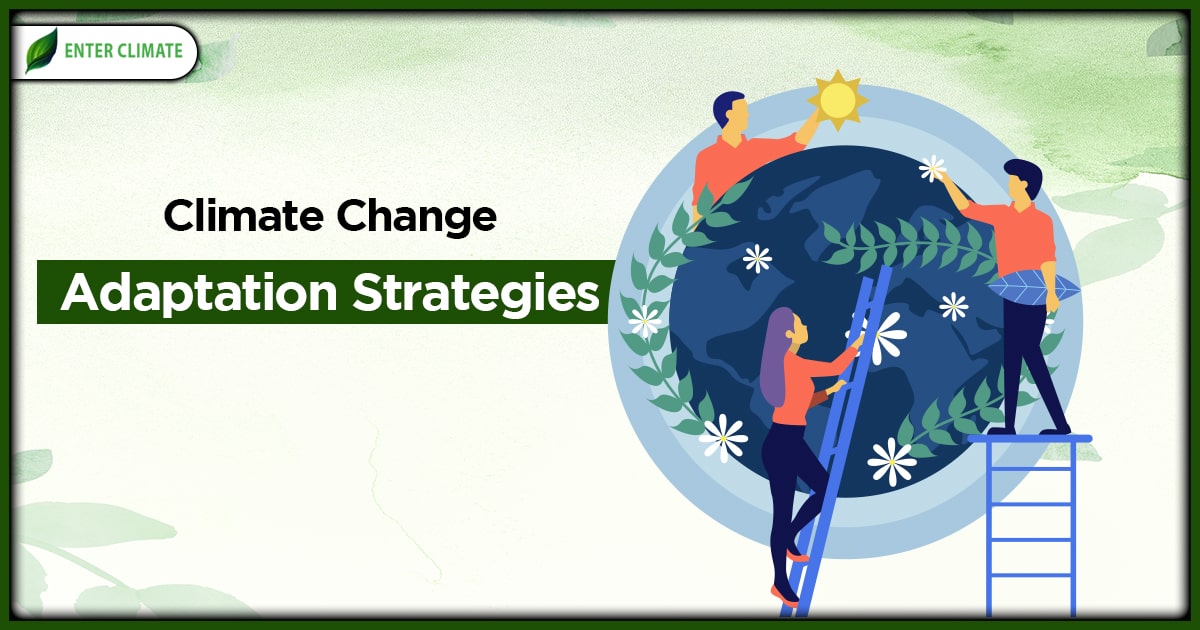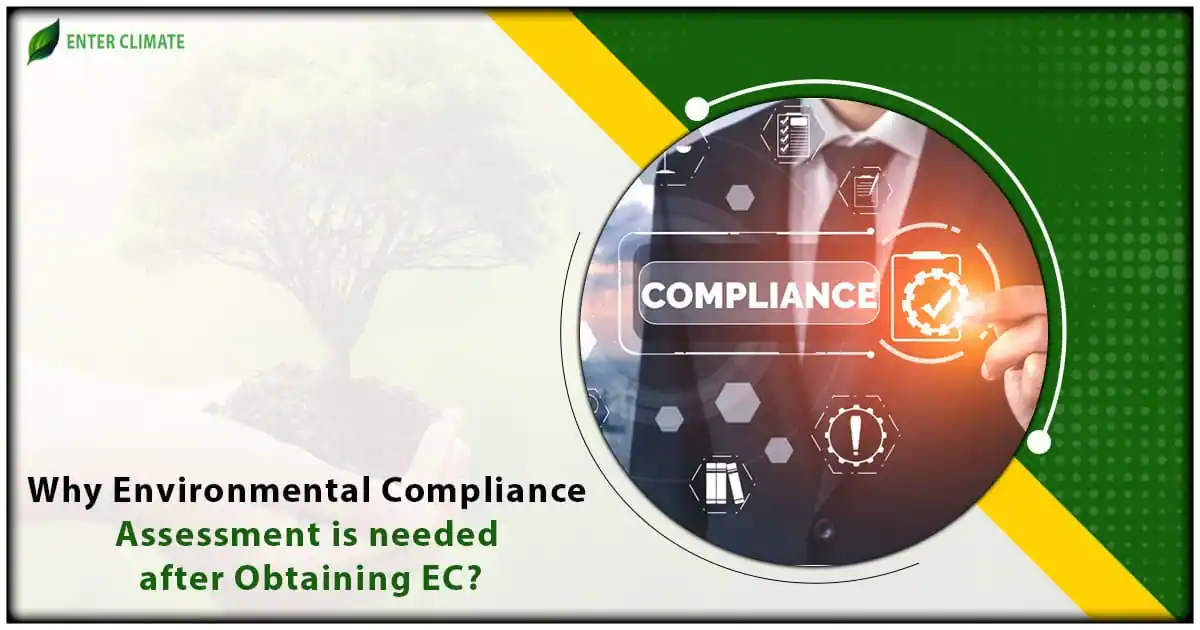Climate Change Adaptation Strategies
 06 Oct, 2023
06 Oct, 2023 
The term “adaption” describes changes made to social, ecological, or economic systems in response to actual or predicted climatic stimuli and those stimuli’s effects or impacts. It refers to adjustments made to procedures, routines, and structures to take advantage of opportunities brought on by climate change.
It will be essential to involve local governments and community-based organizations in creating adaptation strategies. The key components of climate change adaptation strategies include risk management and reduction. Humanitarian organizations bring decades of expertise in collaborating with local actors to help local stakeholders lead adaptation measures to safeguard their communities from impending climate risks.
Features of Climate Change Adaptation Strategies
- Numerous coping mechanisms have been developed by human systems to deal with climatic risks; these mechanisms may be used to address climate change vulnerabilities. Environmentally conscious behaviour, a problem-solving mindset, cognitive re-structuring or reframing, seeking out social support, increasing awareness of the issue, and expressive coping are all examples of ways to cope with climate change.
- The application of adaptation policies, programs, and measures typically has both immediate and long-term positive benefits such as biodiversity, air quality, water management, greenhouse gas emission reductions, and health and well-being.
- Reducing vulnerability, especially for the most vulnerable nations, regions, and socio-economic groups, requires improving adaptive capacity.
Objectives of Climate Change Adaptation Strategies
Adaptation is a dynamic, ongoing process that involves learning from loopholes and trying new things. There will be a requirement to modify the climate change adaptation strategies or try new ones as the climate changes. The objectives of climate change adaptation are-
- to lessen the risk and vulnerability of people, livelihoods, physical assets, and natural systems from the harmful effects of climate change;
- to improve institutional and technical capabilities for efficient adaptation to climate change;
- Including climate change adaptation in pertinent policies, plans, and related procedures
Strategies for Climate Change Adaptation
Although climate change poses a threat to the planet’s future, we still have time to prepare for it, and although combating climate change is difficult, we can lessen its negative effects by working together and taking measures. Some of the climate change adaptation strategies are: –
- Replanting forests and fixing ecosystem damage.
- Crop diversification to increase their capacity for climate adaptation.
- Researching and creating creative ways to manage and prevent natural disasters.
- Creating plans of action for climate emergencies.
- Incorporate longer climate predictions into land use planning by extending the planning horizons.
- Keeping groundwater extraction from shallow aquifers to a minimum will help to maintain both water quality and availability.
- Critical areas that may be significantly impacted by climate change include groundwater recharge, snowpack, and the timing of snowmelt. These factors should be considered in the analysis.
Reasons to Adapt to Climate Change Strategies
Climate change is expected to worsen the intensity, frequency, and impacts of some types of extreme weather events. Hence, it is important to adapt to climate change. Some of the reasons for adapting to climate change are-
- Anticipatory and precautionary adaptation is considered more effective and less costly than forced, emergency adaptation, or retrofitting last-minute.
- Compared to current estimates, climate change may be more pronounced and rapid. Unexpected events can occur, like hotter temperatures, severe storms, increased drought, health risks, loss of species, etc.
- Improved adaptation to climate variability and extreme atmospheric events (strong wind, rain, hail. hurricanes or cyclones, strong wind, heavy rain, etc.) have immediate benefits.
Impact of Climate Change Adaptation
While adaptation will be necessary everywhere, it must be given priority right away for those who are most at risk and have the fewest resources to deal with climate hazards. Intense droughts, rising sea levels, water scarcity, destructive fires, flooding, melting polar ice, catastrophic storms, and a decline in biodiversity are currently some of the effects of climate change. Increasing greenhouse gas emissions from human activity act like a blanket wrapped around the earth, trapping the sun’s heat and raising temperatures. People have different ways of coping with climate change. It has an impact on our work, housing, safety, and capacity to produce food. Some of us, such as residents of small island developing States, are already more susceptible to the effects of the climate. Whole communities have been forced to relocate due to conditions like sea level rise and saltwater intrusion.
Effect of Ecosystem and Life Cycles
Climate change may affect ecosystems and life cycles by altering precipitation patterns, water availability, water quality, and extreme weather events’ frequency of low flow, flood floods, and droughts.
Why Businesses Should Focus on Climate Change Adaptation
Economic conditions frequently experience ups and downs, and businesses must adjust to these changes. Every type of business is impacted by the economy, whether it gets better or worse. Demand for goods and services rises as the economy gets better.
- Globally, businesses are affected by climate change, which has an impact on their value chains and financial performance. Businesses can reduce operational and value chain risks, preventing economic losses brought on by climate impacts. Additionally, climate change presents business opportunities. First, businesses can try to lower costs by increasing resource productivity (for instance, by improving energy efficiency). Second, climate change can inspire innovation, leading to the development of new goods and services that either reduce carbon emissions themselves or enable others to do so. Thirdly, businesses can make their supply chains more adaptable by, for instance, reducing their reliance on fossil fuels and switching to renewable energy sources. These actions taken collectively can increase competition and open new market opportunities.
- Opportunities for business expansion, innovation, efficiency, and sustainability are presented by climate change adaptation.
- By investing in climate change adaptation strategies, businesses can seize opportunities and benefit from increased revenue and cost savings. They can do so through partnerships with governments, development banks, small-scale local entrepreneurs, and community groups working to shift to a low-carbon economy.
2014 Global Risks Report
The report ranked failure to adapt to climate change as one of the greatest global risks, both in terms of likelihood and effects. The impacts of climate change are not and never will be distributed equally throughout the world. Instead, evidence indicates that they disproportionately affect the most underprivileged populations in developing nations. Therefore, if the needs for human development of the world’s poor are to be met and if previous development gains are to be preserved, adaptation to the effects of climate change[1] is not only necessary but also urgent.
About Special Climate Change Fund
The Special Climate Change Fund was created in response to recommendations made at the UNFCCC COP 7 (United Nations Framework Convention on Climate Change) meeting in Marrakech, Morocco, in 2001. It is intended to finance climate change-related initiatives that complement those supported by the GEF’s (Global Environment Facility) climate change focal area through the four funding windows listed below:
- Changing climate adaptation
- Technology swap
- Mitigation in a few industries, such as energy, transportation, business, forestry, and waste management
- Diversified economy.
Conclusion
Through adaptation, the harmful effects of climate change can be significantly mitigated. The societal response to global climate change must include adaptation. Reduced vulnerability and the realization of opportunities related to the effects and dangers of climate change are both possible with planned, anticipatory adaptation. There are many instances of successful adaptations that could be used for climate change opportunities and risks. Through the timely implementation of adaptation measures, climate change damages can be significantly reduced, particularly in the most vulnerable regions.
The actions needed to improve adaptive capacity are very similar to those that support sustainable development. Both climate adaptation and equity objectives can be pursued through programs that improve the welfare of society’s most vulnerable citizens, such as by facilitating access to safe water, improving food security and healthcare, and providing shelter and access to other resources. Although they have a significant impact on how well communities and regions can adapt, development decisions, activities, and programs frequently fail to consider the risks brought on by climate variability and change.
FAQs
The process of adjusting to the effects of climate change is known as adaptation. These effects may be immediate or anticipated. The goal of adaptation is to lessen or prevent harm to people. It also seeks to take advantage of chances.
Adaptation to climate change is important to lessen the risk and vulnerability of people, livelihoods, physical assets, and natural systems to the harmful effects of climate change; to improve institutional and technical capabilities for efficient adaptation to climate change, including climate change adaptation in pertinent policies, plans, and related procedures.
Mitigation refers to lowering or stopping greenhouse gas emissions to lessen the severity of climate change’s effects. The term “adaptation” refers to making adjustments to the past, present, and anticipated future effects of climate change.
The common climate change adaptation strategies are replanting forests and fixing ecosystem damage, Crop diversification to increase their capacity for climate adaptation, Researching and creating creative ways to manage and prevent natural disasters, and creating plans of action for climate emergencies, incorporating longer climate predictions into land use planning by extending the planning horizons.
The adaptation measures affect the local community as they share information and communicate practical adaptation messages to the community, helping larger communities plan, coordinate, and carry out adaptation actions. As a result, both gradual climate change and extreme weather events have a smaller impact.
To define how they will incorporate adaptation and context of climate change into their political agenda, ongoing government schemes, and practical actions, all Indian states are developing State Action Plans on Climate Change in accordance with the NAPCC. To provide technical support to particular states in the development of these plans, the Ministry of Environment and Forests provided a common framework for SAPCC development in 2010. The SAPCC identifies and ranks various options for adaptation and mitigation. The plans should ideally be created through a significant amount of participatory planning.
Yes, businesses and individuals can contribute to adaptation efforts by introducing opportunities for business expansion, innovation, efficiency, and sustainability presented by climate change adaptation. Businesses can reduce operational and value chain risks, preventing economic losses brought on by climate impacts. By investing in climate change adaptation strategies, businesses can seize opportunities and benefit from increased revenue and cost savings.
First, there must be a variety of socio-economic and even some (non-climatic) biophysical factors among the components of challenges to adaptation. Second, interactions between scales and variations in these factors must be carefully taken into account. Third, both quantitative and qualitative components are necessary for any representation of the concept.
Yes, The Special Climate Change Fund was created in response to recommendations made at the UNFCCC COP 7 meeting in Marrakech, Morocco, in 2001. It is intended to finance climate change-related initiatives
Read our Article: Overview Of India’s Biodiversity And Climate Goals












